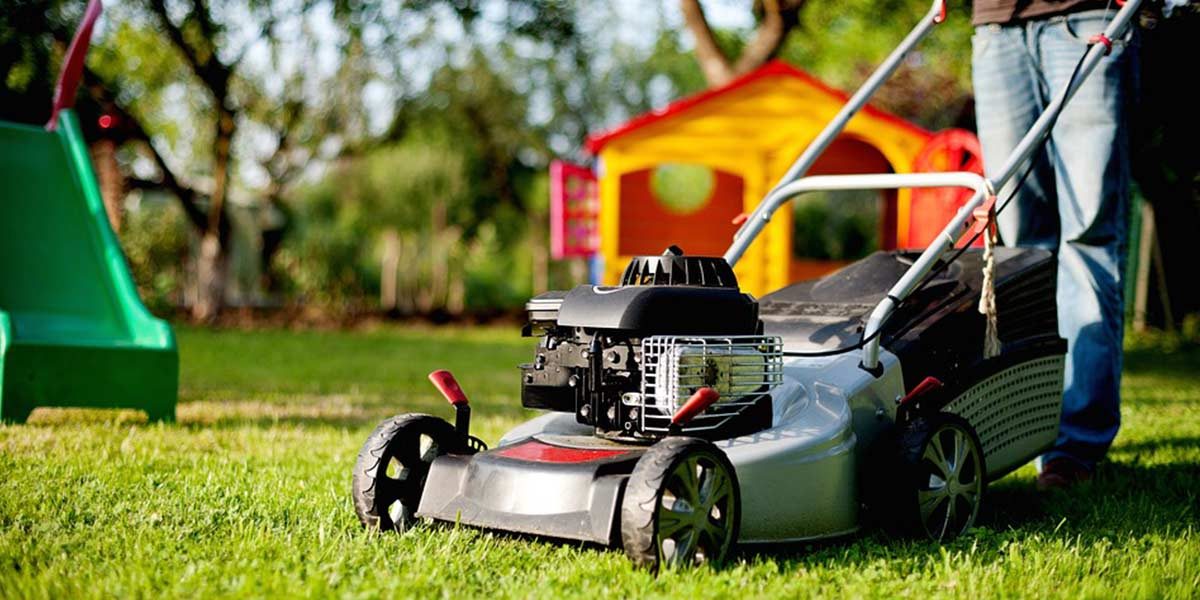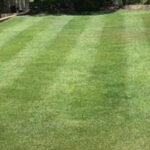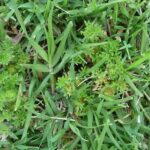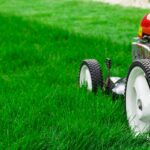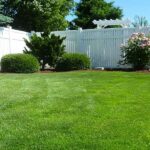Lawns that are properly cut are healthier and more attractive. A properly mowed lawn is thicker and has deeper roots, making it more durable and better equipped to combat weeds, insects, and diseases.
Mowing mistakes can result in discolored lawn tips, brown spots, and even severe damage to the lawn. Common mistakes are mowing too infrequently and cutting grass too short. Here are some tips on proper mowing technique:
Avoid Scalping
Letting grass grow tall and then removing more than 1/2 the leaf blade is called scalping and can damage the lawn. Mowing grass extremely low can also damage the lawn by cutting into the crown of the plants.
Sharpen Blades
Make sure your mower blades are sharp in order to cut cleanly. Dull blades can shred grass and cause discoloration at the tips because frayed grass blades lose moisture easily. Sharpen/replace the blades of rotary mowers several times each growing season. Reel type mowers usually only require sharpening once a year, but adjust them to ensure they cut cleanly. Some grass species have tough blades, which causes blades to wear quickly.
Be Gentle with Damaged Grass
Raise the mower height a notch or two when mowing a lawn that’s recovering from drought, insect damage or disease.
Don’t Cut Wet or Wilted Grass
Avoid cutting wet grass, which can cause brown spots because clippings clump together and smother your lawn. Cutting wilted grass, particularly during the hottest part of the day, can also cause severe damage to your lawn.
Know When to Mow
The best guide for mowing frequency is the growth of your grass. Plan to cut less than one-third of the grass blade in one mowing. Keep in mind that certain grasses require close mowing to stay healthy. Allowing these grasses to grow too high will promote thatch development.
So You Miss a Mowing?
During periods of rapid growth, lawns may require mowing as frequently as weekly. Sometimes we just don’t have time to mow as often as we’d like. If your grass has grown too high, reset your mower to a higher cutting level. A week later, reset the mower to cut at the normal height and mow your grass again.
Mowing Height
Select the proper mowing height for your lawn. Measure the grass plants after mowing a very small area, then adjust your mower as necessary. Always mow your lawn at the recommended cutting height.
A thriving warm-season grass will tolerate lower cutting heights with greater frequency during warmer months, as leaf production is prolific during October to April, but cutting heights should be raised in cooler months to aid photosynthesis.
Mowing After We Have Sprayed
To ensure the effectiveness of the application and to minimise exposure, the lawn should not be mowed for at least 24 hours following the application or until it has been watered, or it has rained and dried.
Don’t forget your garden watering roster
To find out your watering days, simply take the last digit of your house or lot number and apply it to the table below.
Perth and Mandurah watering days | ||
Last digit of your lot or house number | Scheme & bore water users, your 2 watering days are: | Bore owners additional day: |
1 | Wednesday and Saturday | Monday |
2 | Thursday and Sunday | Tuesday |
3 | Friday and Monday | Wednesday |
4 | Saturday and Tuesday | Thursday |
5 | Sunday and Wednesday | Friday |
6 | Monday and Thursday | Saturday |
7 | Tuesday and Friday | Sunday |
8 | Wednesday and Saturday | Monday |
9 | Thursday and Sunday | Tuesday |
0 | Friday and Monday | Wednesday |
You may water only once each day either before 9am or after 6pm. You can still water with a hand-held hose at any time. | ||
Experts agree these rosters will provide more than enough water to maintain a waterwise garden.
For more tips on how to be waterwise, visit waterwisewaysforwa.com.au or call the Waterwise Infoline on 131039.

